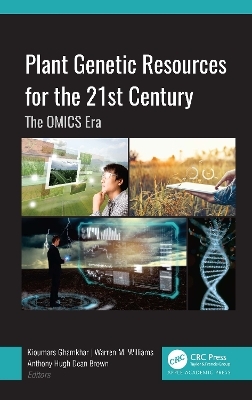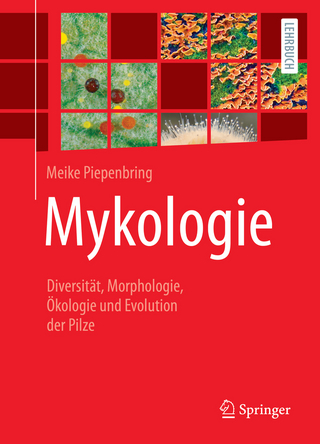
Plant Genetic Resources for the 21st Century
Apple Academic Press Inc. (Verlag)
978-1-77491-082-5 (ISBN)
Exploring plant genetic resources is crucial in a time when food security has been a critical topic worldwide due to crop shortages and the impact of climate change.
This new book, Plant Genetic Resources for the 21st Century: The OMICS Era, presents the practical advancements in genomics, epigenetics, metabolomics, and phenomics from the point of view of researchers and scientists working in the field of genebanks, genetics resources, and germplasm for enabling plant breeding and adaptation to a changing climate. The book highlights the importance of genebanks as centers of innovation for crop and forage improvement and discusses database solutions for genebanks and germplasm collections.
The book first looks at plant genetic resources and their values and goes on to investigate several genomic technologies for plant improvement, conservation, and better adaptation to changing climates. Major crops such as wheat and barley are discussed with genomic approaches for diversity and resilience to drought and other adverse conditions. Other omics techniques discussed include phenomics for the improvement of crop adaptation, metabolomics research for germplasm improvement and adaptation, and more.
This volume will be valuable for researchers who are presently working in or with genebanks and genetic resources, primarily for trait or allele discovery and germplasm improvement. Most chapters in the book can also be used as teaching material at the undergraduate and postgraduate levels.
Kioumars Ghamkhar, PhD, is Director of New Zealand’s National Forage Genebank, Margot Forde Forage Germplasm Centre and leads plant phenomics research at New Zealand Crown Research Institute, AgResearch. He has over 20 years of experience in the conservation, classification, characterization, and use of plant genetic resources. Dr. Ghamkhar co-chairs the Phenomics Working Group at the DivSeek International Network and the Seed and Germplasm Phenotyping Working Group at the International Plant Phenotyping Network. He is an associate editor with Frontiers in Plant Science. Warren M. Williams, PhD, is Emeritus Scientist of the AgResearch Grasslands Research Centre, Palmerston North, New Zealand, and former Professorial Fellow in Plant Breeding at Massey University, Palmerston North. He was the breeder or co-breeder of eight commercially successful forage cultivars and contributed as a prebreeder for several more. He was the Curator of the Margot Forde Germplasm Centre, the New Zealand genebank for forage species. He carried out plant breeding research using interspecific hybridization in forage species and participated in seed collecting expeditions in Europe and North America. He has authored over 80 peer-reviewed scientific papers and was a contributor and co-editor of the 1987 CABI book White Clover, with MJ Baker. Anthony Hugh Dean Brown, PhD, was until recently Honorary Research Fellow of Bioversity International, Rome, Italy, and Technical Advisor on their global project developing the scientific basis of in situ conservation on-farm. He retired in 2006 as a Chief Research Scientist in the Centre for Plant Biodiversity Research, CSIRO Plant Industry, Canberra, Australia, but continued until 2015 there as Honorary Research Fellow in the Australian National Herbarium, researching the evolution and conservation biology of indigenous species related to crops. He has authored singly or jointly over 200 research papers and reviews, and monographs (with D. I. Jarvis, T. Hodgkin, J. Tuxhill, I.L. Noriega, M. Smale and B. Sthapit, Crop Genetic Diversity in the Field and on the Farm). He has participated in plant collecting missions for wild relatives of crops, two for wild barley (Israel, Iran) and six for wild Glycine and Gossypium in many regions of Australia. He was curator of the Australian Plant Genetics Resources Centre for Indigenous wild relatives of crops.
Foreword PART I: CONFRONTING THE GENETIC DIVERSITY IN CROP AND PASTURE PLANT SPECIES 1. Plant Genetic Resources and Their Values 2. Evolving Research Themes in Plant Genetic Resources PART II: OMICS TECHNOLOGIES FOR GENEBANKING 3. Omics Technologies for Genetic Resources: Review and Prospects 4. Genomics for Germplasm Improvement and Adaptation 5. Genomic Approaches to Using Diversity for the Adaptation of Modern Varieties of Wheat and Barley to Climate Change 6. Incorporating Genomics Research with Genebank Operations 7. Advances in Metabolomics Research for Germplasm Improvement and Adaptation 8. Phenomics for the Improvement of Crop Adaptation PART III: GENEBANKS AS CENTERS OF INNOVATION FOR CROP AND FORAGE IMPROVEMENT 9. Neglected or Orphan Species 10. Climate Change and Adaptation: Planning Future Germplasm Collections 11. Synteny between Homologous Loci among Evolutionarily Related Species: The Case of Forage Legumes 12. Epigenetics, Plant Genetic Resources, and Their Management 13. The Development of Core Collections and Their Role in Association Mapping 14. Germplasm Enhancement and Genebanks 15. Drought, Omics, and Genetic Resources 16. Database Solutions for Genebanks and Germplasm Collections
| Erscheinungsdatum | 18.01.2023 |
|---|---|
| Zusatzinfo | 9 Tables, black and white; 7 Line drawings, color; 4 Line drawings, black and white; 1 Halftones, black and white; 7 Illustrations, color; 5 Illustrations, black and white |
| Verlagsort | Oakville |
| Sprache | englisch |
| Maße | 156 x 234 mm |
| Gewicht | 453 g |
| Themenwelt | Naturwissenschaften ► Biologie ► Botanik |
| Weitere Fachgebiete ► Land- / Forstwirtschaft / Fischerei | |
| ISBN-10 | 1-77491-082-9 / 1774910829 |
| ISBN-13 | 978-1-77491-082-5 / 9781774910825 |
| Zustand | Neuware |
| Informationen gemäß Produktsicherheitsverordnung (GPSR) | |
| Haben Sie eine Frage zum Produkt? |
aus dem Bereich


